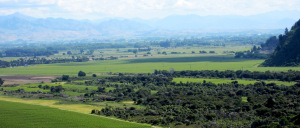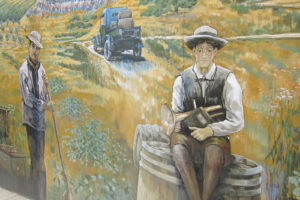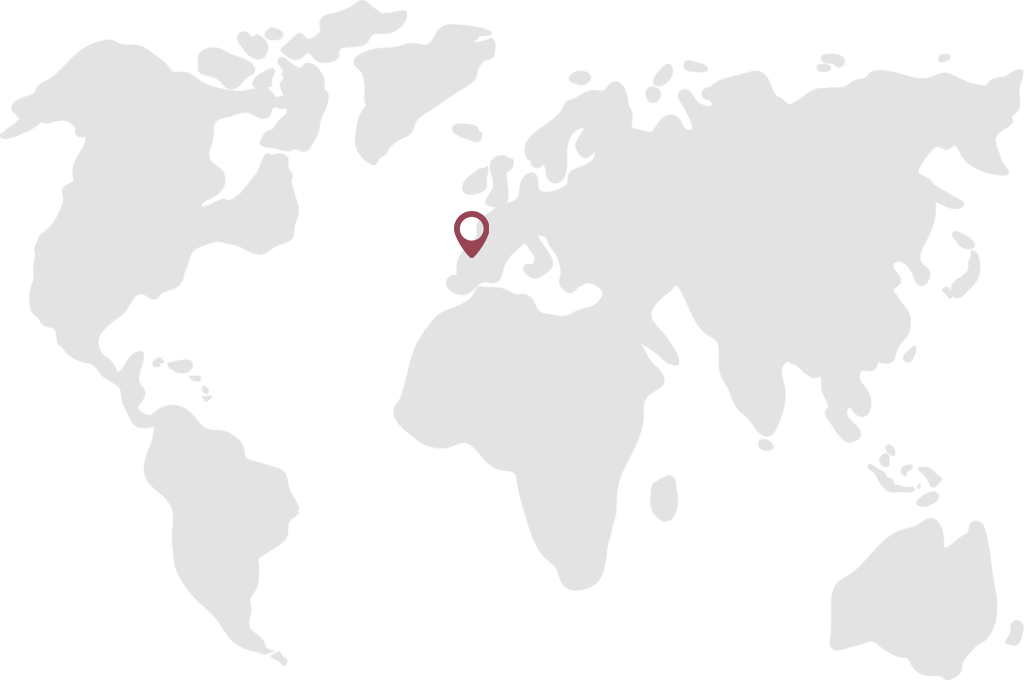Thirty years ago, sheep herders struggled to feed their families in the Marlborough region of New Zealand. There were then only one or two wineries in the region. Today, dozens of vineyards operate near this northern tip of the South Island, producing the bulk of the country’s wine. Revenues generate hundreds of millions of dollars a year and exports ship out to more than 40 countries.
At the entrance to the Blenheim, the largest town in the Marlborough region, a sign reads Kia Ora – which means welcome in the indigenous Maori language.
On a warm December day, the plains are ringed by gorgeous mountains. Cyclists pass beautiful vineyards and hitchhikers thumb westward up the Wairau Valley. Near a dressage center with healthy brown horses, hand painted signs advertise fresh eggs and cherries for sale.

Wither Hills Winery stands west of the town center. There I meet Samantha Scarratt. She is zesty and optimistic and wears a gray T-shirt, jeans, and black boots. She has a doctorate in ecology. The two of us get into a white double cab pickup truck and drive for twenty minutes to Rarangi, where five ‘fingers’ of wetlands mesh into a tended vineyard. This is where wilderness and agriculture meet. Sam’s job is to ensure the marriage is peaceful.
Samantha: “I worked for environmental consultants in the mining industry in Australia and decided it wasn’t what I wanted to do, so went back to study a PhD at Lincoln University, which is in Christchurch. Looking at understory management for vineyards, controlling pest insects, looking at ways of reducing insecticide use.
“Rarangi is quite large, coastal. It originally had a wetland on it, part of a larger wetland complex. We reckon there’s about 50 hectares at Rarangi. It’s got swales and sand dunes and wetlands. It’s fantastic.
“All vineyards have their own little sort of microclimate, but Rarangi feels special. I love the coast, the sea. You can hear the waves crashing out there on a still day. You’ve got wetlands so you get diverse bird life. You can tell that there are more insects out there. When I came along I thought this is fantastic, amazing.”

“In vineyards around Marlborough, a lot more people are looking at biodiversity as opposed to just monocultures. Not just from an economic or a biological viewpoint, but from a sustainable society sort of level. A lot of companies are moving that way.
“Part of my role is to implement more sustainable practices at Rarangi. For me that’s a real reward, to know that people are actually listening. And hopefully you’re providing some sort of education.”
We pull into the Rarangi vineyard. Samantha parks. The Rarangi block is predominantly planted with Sauvignon Blanc grapes, but it also includes Riesling, Pinot Gris, Pinot Noir, and Chardonnay.
“We’re only mowing every second row for grass. Before it would have been mowed neat like a golf course. We don’t need that. There’s no point. In terms of fauna – I really notice the insects. The wetlands, as you get closer, you get this feel that there’s more going on, more diversity closer to native vegetation. We’ll drive up the main part of the vineyard. Here we call the finger vineyards, where the wetlands run in between.
“Work’s never really been much of a grind for me, because otherwise, why do it? I quite like to be able to go out. You’ve got a beautiful day like today, you can drive around. You’ve got that diversity. Mmmm. ‘Tis good.
“I’m really happy. In the last year and a half I wake up in the morning and feel really good about going to work. The wine industry is such a cool industry to be a part of. Everyone I’ve come across is really friendly, willing to share ideas. In Marlborough there’s little groups. You’ve got the research center here and they’re always providing information so there is constant learning. It’s never dull, you know? There’s a lot of variety.
“It’s a great job, but the lifestyle in Marlborough is amazing. Everyone is friendly and open and it’s a wonderfully welcoming community here.
“My husband, he’s a winemaker. I came here and got involved in the wine side of things because my PhD was on viticulture. And then having Chris being involved with wine, it just becomes part of life.

“These areas in between wetlands are quite sandy. Hopefully I don’t have to go into four wheel drive. Have to be careful. If it looks a bit dodgy I’ll back out. I don’t want to have to call out the tractor drivers. They would hate me if I got bogged.
“It’s a really nice vibe out here. Ah look, I think New Zealand, the grape growing stuff, there’s been leaps and bounds in terms of what people are doing. Just the fact that people are considering now what they’re spraying and looking at softer chemicals. That’s really important.”
“There’s heaps of quail out here. And that’s wild fennel. Apparently there have been deer sightings in the vineyard. And that’s the Manuka in flower. I have Manuka honey in my tea. Really amazing. The bees feed on flowers and the Manuka honey’s used for medicinal purposes.
“I sometimes walk my dog down here. It can be quite a wild beach so you don’t swim. Huge drop off and massive waves. Probably tow you out really quickly. It’s lovely, isn’t it? Even in winter when it’s cold and rainy, it’s stunning out here.”




